Joshua Beijer
Naturalist Hangbaord
The inspiration for this idea came from my brother Zac. We were sitting around on winter break trying to think of uses for our abundance of time and lumber from the trees we had cut down earlier that break. He suggested that it would be a great idea to make a hangboard (a piece of climbing equipment used for grip strength and endurance that can be seen below) that we could use for training instead of buying an expensive one online. So we found a tutorial on REI’s website and tried our best. Our initial attempt was pretty rough due to a lack of proper design and tooling and will not be pictured here or anywhere else. This attempt however inspired me to try again with the proper tooling and make a hangboard for this project using the wood I had available.
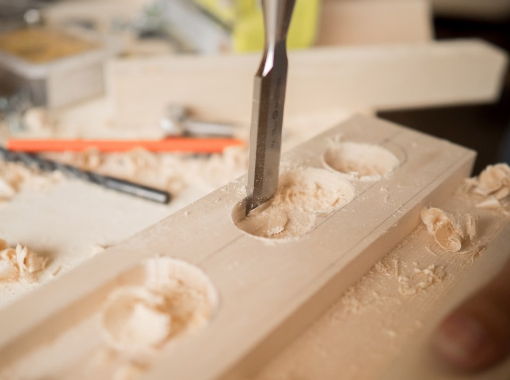
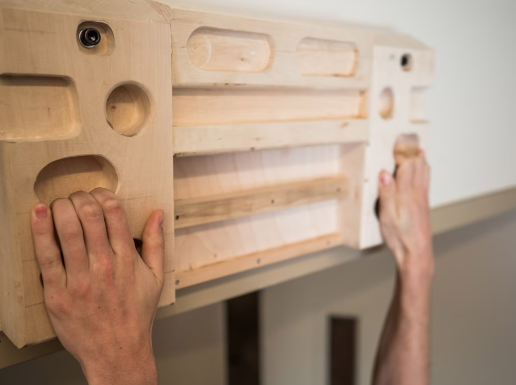
DIY Hangboard inspiration – REI – https://www.rei.com/blog/climb/diy-hangboard
My vision for this hangboard was to create a plank from an aspen log, leaving the bark on two sides, into which I would drill different depth elliptical holds. I believed that this would create a naturalist aesthetic that fits well with the climbing utility. A naturalist aesthetic is characterized by leaving the materials as natural as possible and emphasizing the natural aspects of materials whenever possible. For wood designs, this is accomplished by leaving live edges and emphasizing grain patterns. An example of this aesthetic by Littlebranch Farm woodworking can be seen below. I will accomplish this in my project by leaving the bark on the top and bottom of my plank and using a natural coating to emphasize the natural color and grain pattern of the wood.

K. Maxwell – Littlebranch Farm – Sept 23, 2023 – https://www.littlebranchfarm.com/category/custom-furniture/
The first step in my fabrication was procuring the log for the hangboard. I chose the aspen log pictured below because of its branches and knots. I knew this would create a cool grain pattern on the inside and the branches would add to the bark siding. It was a little shorter than a normal hangboard (just under 16 in. x 6 in.) but I decided to use it anyway. I chose aspen over the other tree options I had because I did not want to have to deal with sap or pieces of bark flying off in the cutting process.
Aspen Log from my parents’ house in Confier Colorado.
I tried to dry out the log by leaving it in front of the heat vent in my house for about a week because a log of this size would normally take around six years to dry out naturally. I then took it into the machine shop and learned it still had around 45% water left in it. This meant I would not be able to use the table saw like I originally planned because of its electric sensor stop. I then spent a few hours making a sled, pictured below, out of scrap wood so I could cut it with the bandsaw instead.

Mounting sled for bandsaw
After mounting the log to the sled with screws and wood shims so that the log could not move, I slowly cut the center of the log into a plank. I tied it to angle it so I get as much of the branches as possible. As I cut I used wooden shims to keep the log from closing back on itself and pinching the blade. After cutting the plank I let the wood dry again for a few more days.
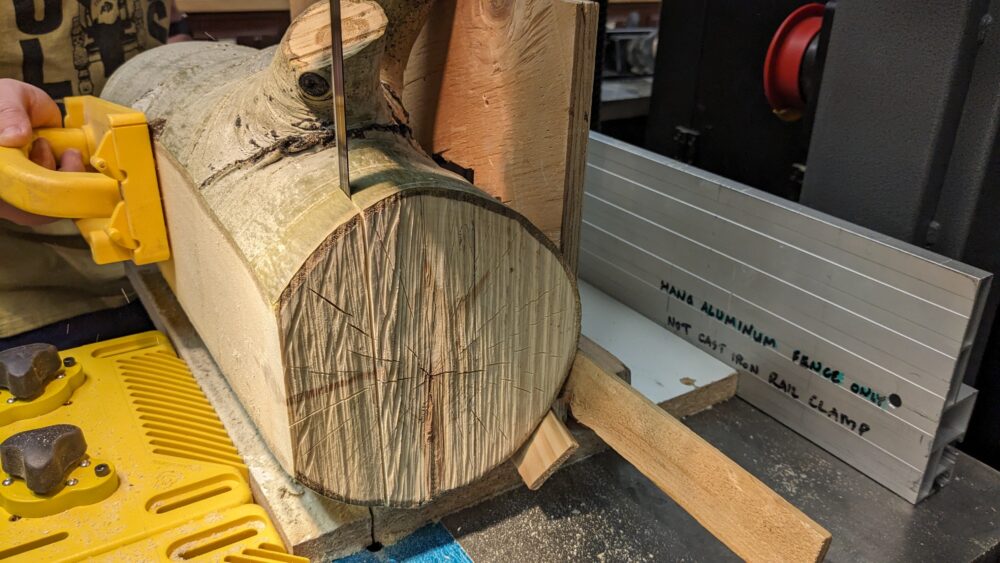
2nd cut on bandsaw
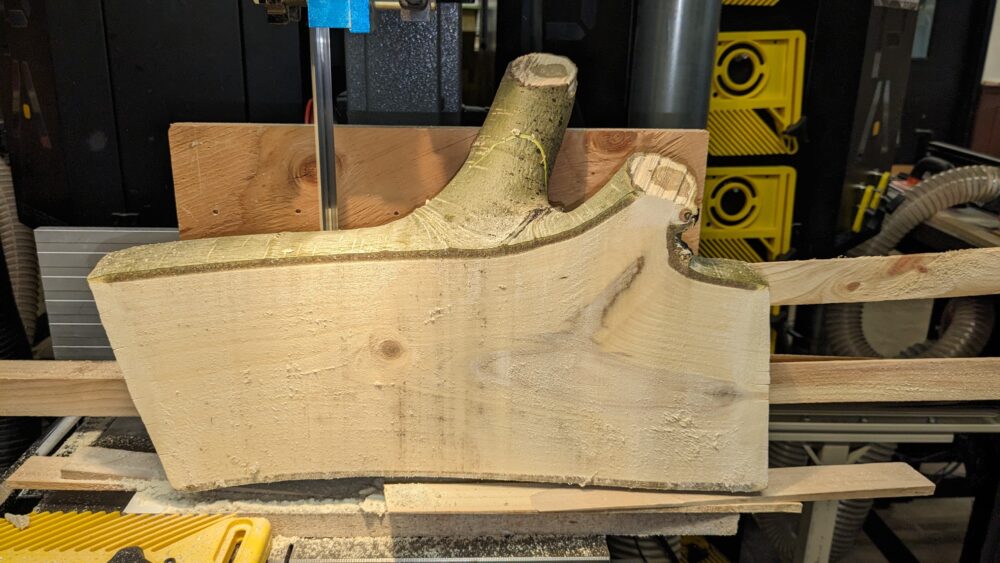
3rd cut on bandsaw
The next step was to use the planer and get the plank flat and level on both sides so I could carve the holds in. I created another sled, pictured below, to push the plank through the planer and attached it with a wedge of wood and hot glue. I then sent it through the planer multiple times for both sides. The inside plank was still very wet after going through the planer so it was difficult to sand. After sanding thoroughly it was time to start working on the holds.
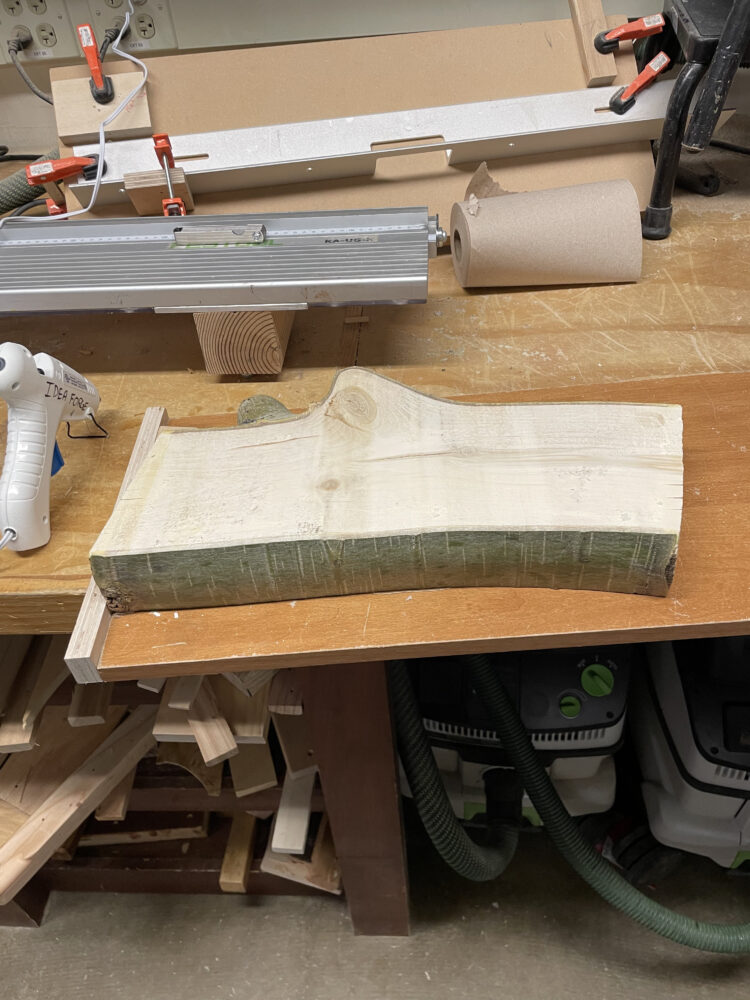
Mounting sled for planer
I then consulted the wood shop staff and decided to use a router instead of the drill method the DIY tutorial suggested. This required me to laser cut an acrylic template but resulted in a more accurate finished product. I attached the template to the log with double-sided tape and then used the router set to depths of 35, 30, 20, 10, and 6 mm (standard climbing depths) to cut the holes.
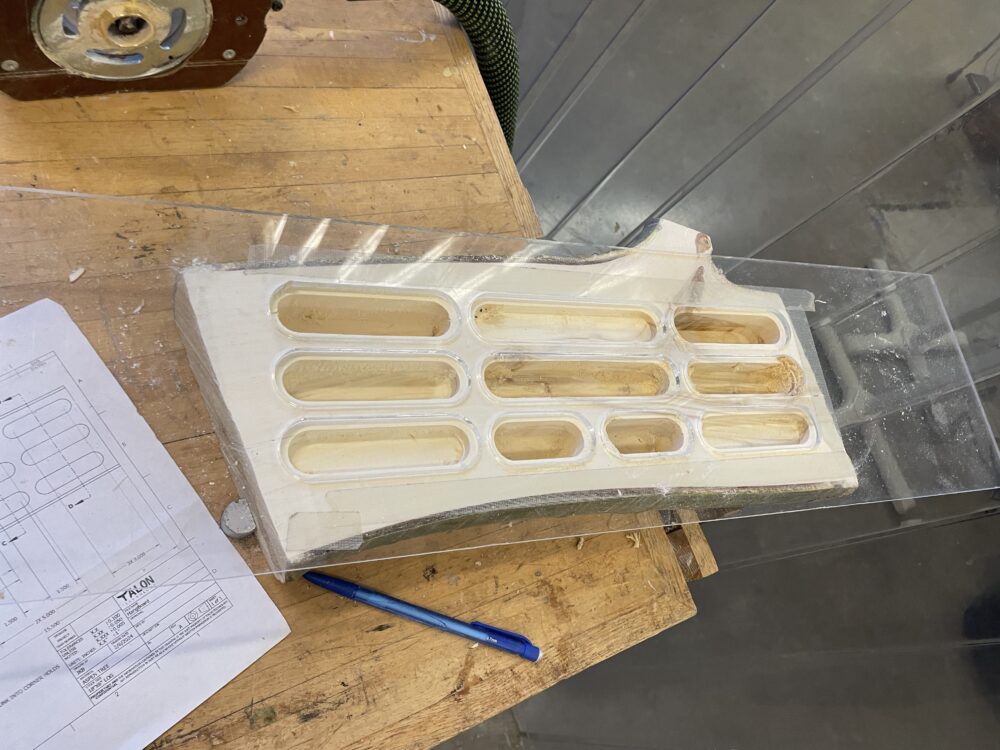
Acrylic template for router
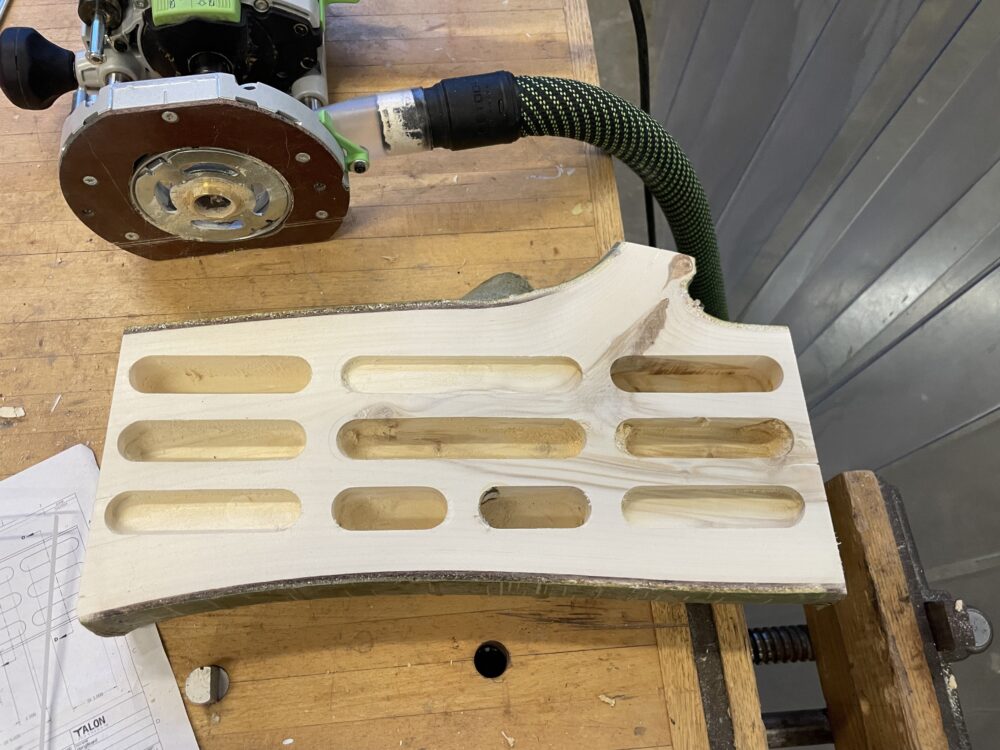
Routed holds
After cutting the holes I drilled the mounting holes and sanded them to ensure there would be no splinters. The last step was applying a coat of mineral oil to protect the wood and bring out the natural grains (note the difference between the previous picture’s grains and the following’s).
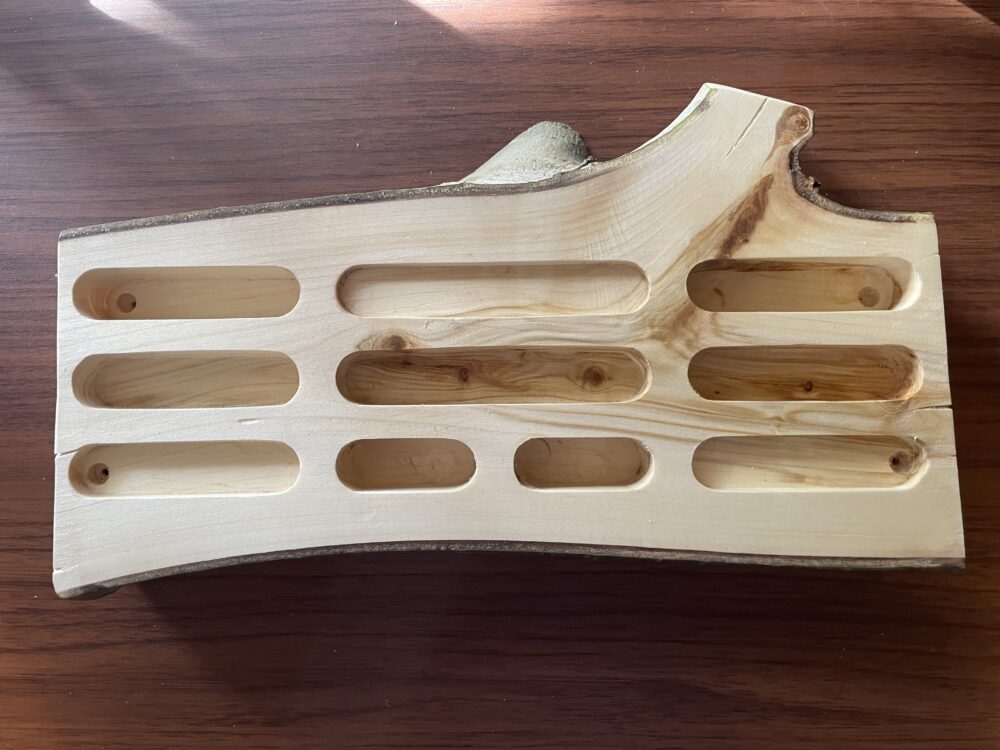
Final sanded artifact with mounting holes and mineral oil coat
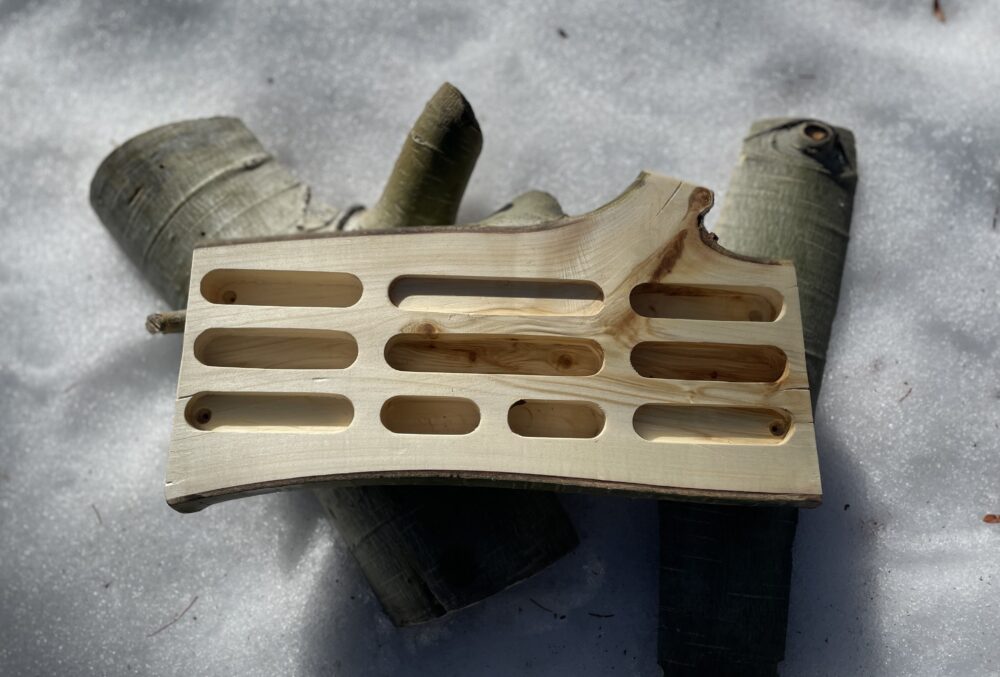
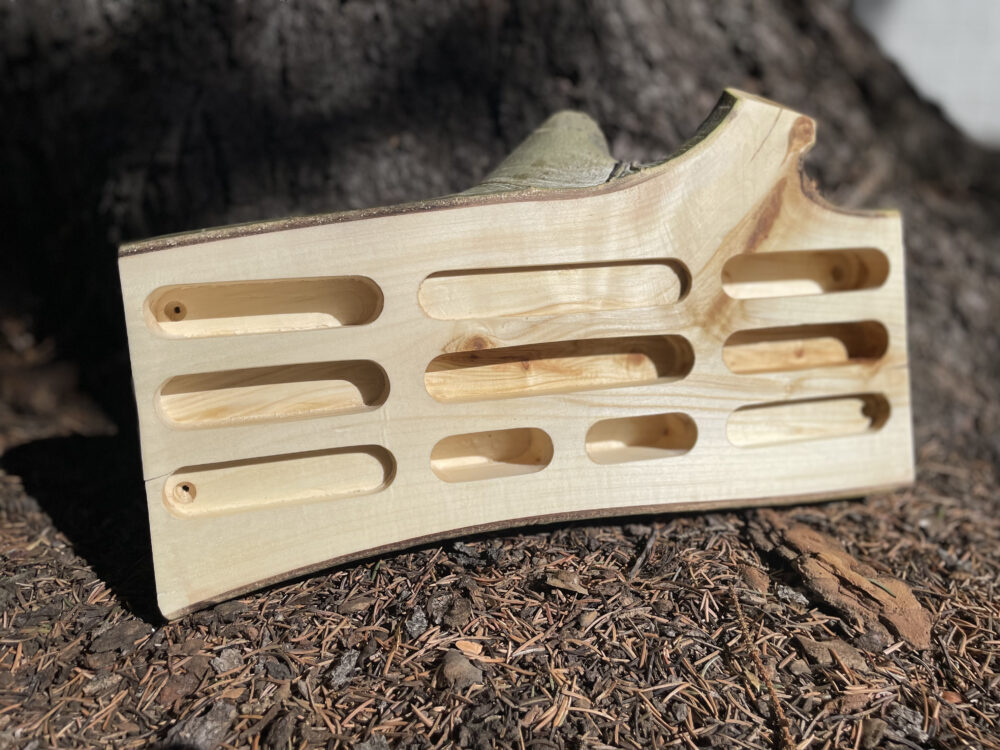
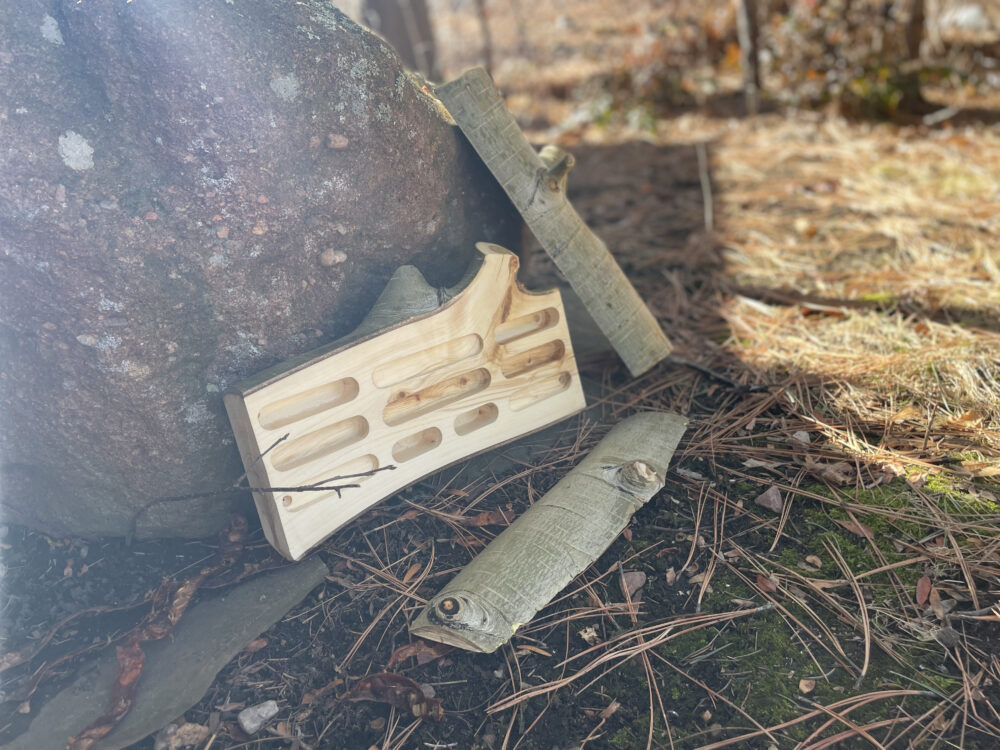
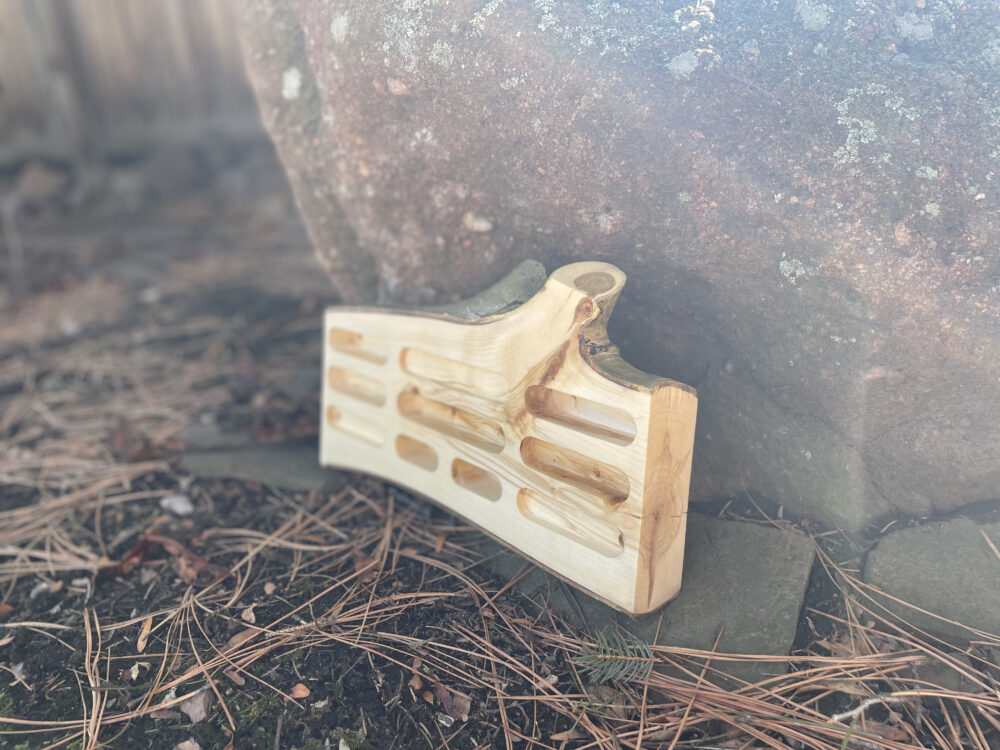
Overall I am very pleased with how this project turned out. Functionally, it is exactly what I had intended to make. It is strong enough to support an average human weight and the depths of the holds are within a few thou of specified dimensions. It is smaller than a normal hangboard but has plenty of holds and is more compact. It is slightly heavier than I had anticipated but it will continue to diminish in weight as it dries out.
Aesthetically, this project far exceeded my expectations. I did not expect to see such clear wood grains or that the holds would come out so exactly. I really like the way the heart of the tree can be seen in the branch and side, see the last picture. An argument could be made that the rigid order of the holds does not match the desired aesthetic. I believe that the pattern of the holds along with the color of the wood and bark, creates a fusion of naturalism with a more modern minimalist look rather than a rustic naturalism. This hangboard would look at home in a wooden cabin or an urban apartment.
I plan to hang this hangboard up at my parent’s house as both a utility and decorative item. I also still have the router template and could easily make more of these. I have even considered selling them on Etsy or a similar site. If this sounds interesting to you feel free to reach out to me via email at josh.beijer@gmail.com.

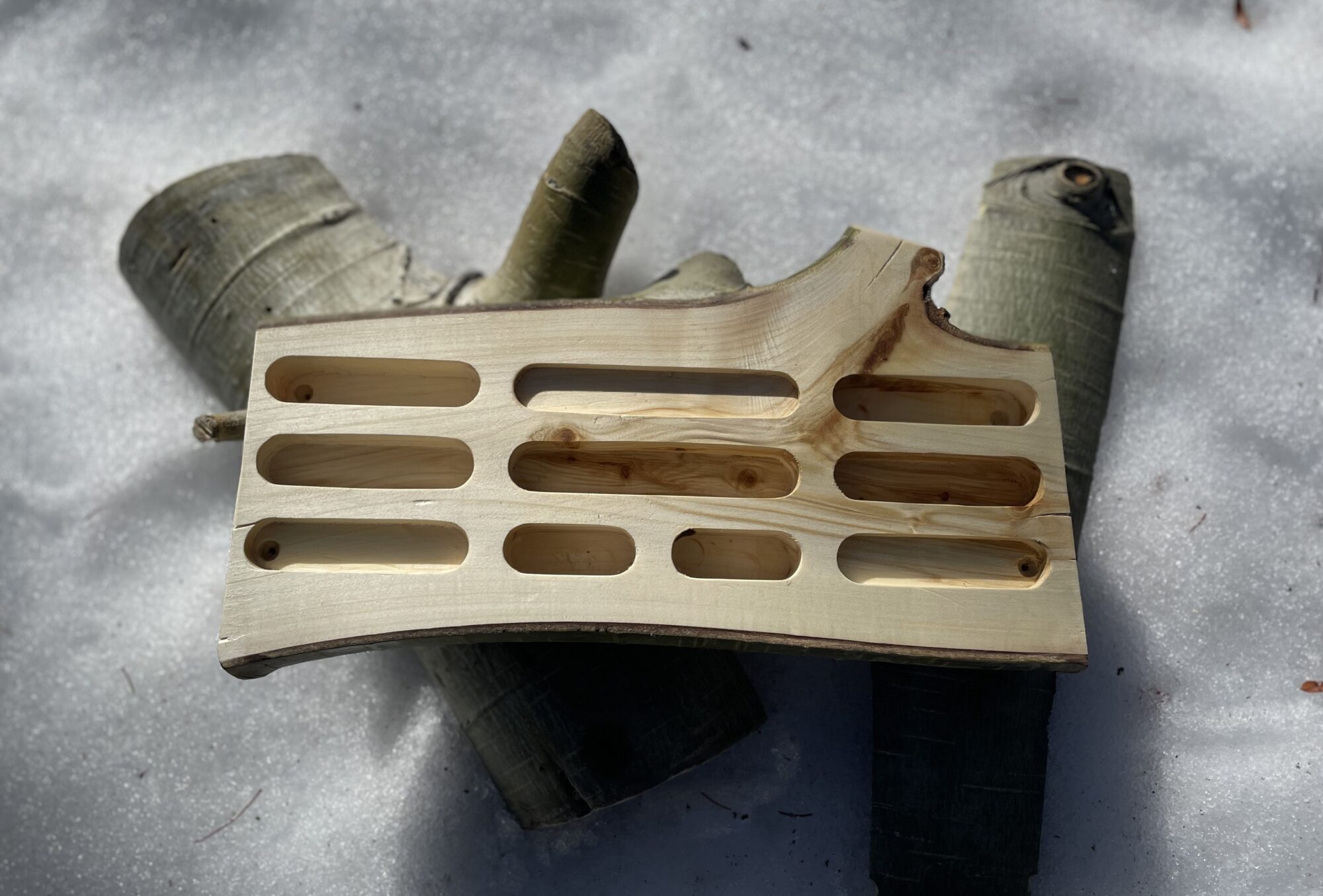
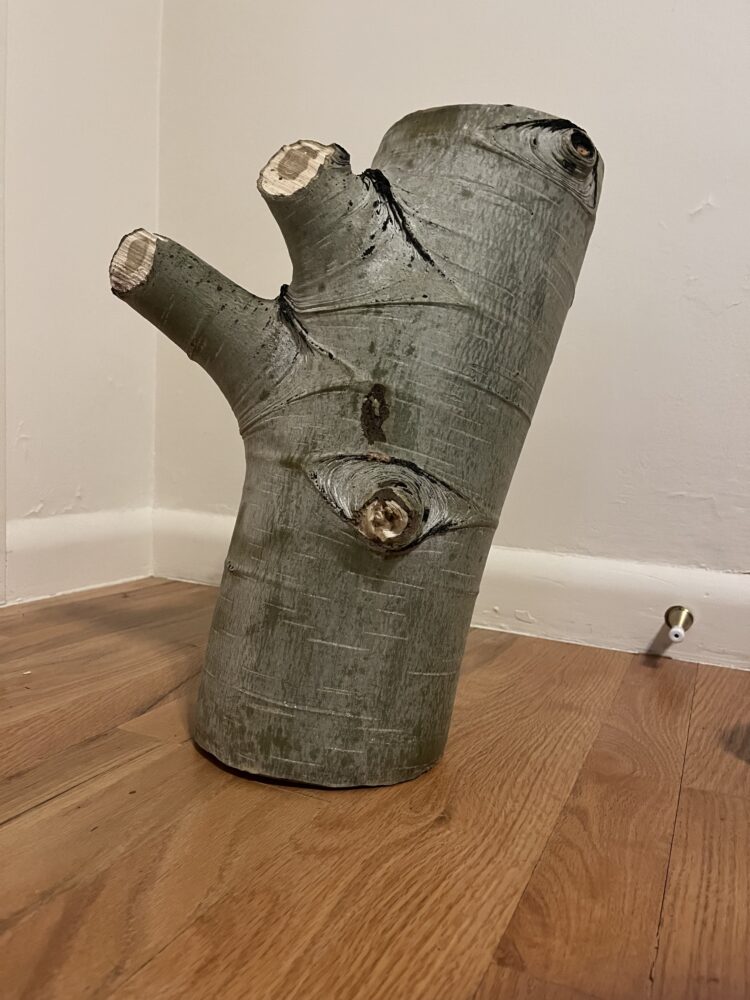
5 Comments. Leave new
[…] Naturalist Hangboard […]
Hi Josh, this looks fantastic! It comes off like it was made by a professional carpenter, it’s awesome: practically and aesthetically. Do you think the moisture content might potentially cause issues with warping of the wood?
Hi Trent, I am definitely concerned about warping and cracking as the wood dries. The natural oil coat should help this but I will be interested to see what happens.
Hi Josh,
Well done! This project looks like a huge success practically and aesthetically!
How did you acquire the log that you made the hangboard out of?
Hi Michael, I acquired this log from my parents’ house in Conifer Colorado. We had to cut down some trees to maintain the property this winter break.